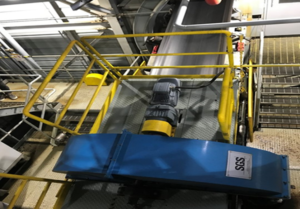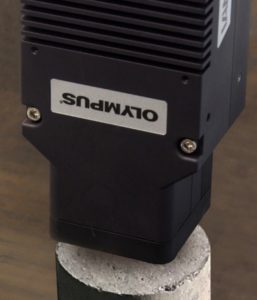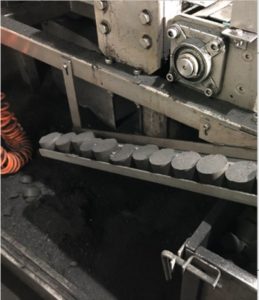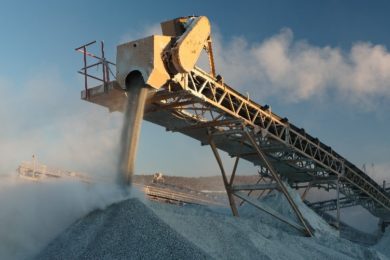A high demand for commodities gives producers and manufacturers both opportunity and motivation to become more efficient, pragmatic and automated, Evident Scientific* says.
With the high prices comes shorter contracts with specifications that can change from week to week. This gives miners and recyclers an added challenge in streamlining their operations.
Varying grades and penalty elements mean both mines and smelters need to have accurate chemical analysis, low bias port-to-port and fast information in as close to real time as possible to be effective to production. Mine managers will agree improved data accuracy leads to better extraction at the pit, optimised blending of material, reduced penalty elements and improved output, which overall means better profitability.
Most on-site labs usually run 4-5 hours behind production, often more when using third-party remote laboratories. This can cause delays ranging from hours to days. Manually collected samples may provide little in bulk material representativity. Most sampling experts recognise that many bulk material biases come from sampling and less from the technique. Automating this process and bringing the laboratory to the samples increases productivity, reduces bias and improves overall accuracy.
The key here is not to bring the analyser to the belt but to bring the lab sample prep technique to the belt. Many on-belt analysis techniques try to measure concentration on the belt and are faced with the varying nature of materials on the belt, making it impossible to get consistent enough reading for accurate analysis.
Automatic on-belt sampling system solution
To solve this issue of inaccurate on-belt sampling and analysis, X-ray Fluorescence (XRF) technology, which can identify and quantify the composition of minerals in seconds, is an essential component. The second part required for an effective on-belt sampling solution is an automated mechanism that collects and prepares samples of bulk mined material, such as coal, aluminium, titanium, iron, manganese, nickel and copper ores. The well-prepared samples are presented to the in-line XRF analyser to obtain fast, automated and accurate analysis of the material, removing bias from moisture, mineral interference, grain size and many other obstacles you get from trying to sample directly on the belt.
Three-step process for automated on-belt analysis
The following describes the step-by-step process of such an automated on-belt system once implemented in the mineral processing line.
- Automated collection of mined materialsThe system automatically collects the samples from the belt at intervals that the user can set. The mechanism is a cross-belt sampler that does not stop or slow the belt. The sampler can be adjusted to any conveyor belt and processed using the plant’s distributed control system (DCS) to ease operations. The collection process complies with the following standards:
- ISO 12743 (Cu, Pb, Zn, Ni);
- ISO 13909, ISO-3082 (Fe);
- ASTM E877 (chemical analysis); and
- ASTM D7430.
- Automated sample preparation for XRF analysis of mined materials
Some 15 kg of collected samples are first crushed from 50 mm to 4.5 mm (Crusher 1) and from 4.5 mm to 200 µm (Crusher 2) into a 500 g puck. The moisture content is taken and recorded to remove measurement bias. The samples are pressed and ready for chemical analysis using XRF. The entire preparation process is automatically controlled and monitored. - Real-time chemical analysis of mining feed material on the belt
The prepared samples are then analysed using the in-line XRF analyser. For this system, the XRF analyser chosen features a fast and highly accurate AI-inspired dynamic method that is flexible and able to deal with multiple matrices at the same time.
It also offers the following capabilities:- Excellent sensitivity to trace elements;
- Quantification of up to 30 elements in one measurement;
- Detection down to 1 ppm for critical elements; and
- Analysis of light elements, including magnesium, aluminium, silicon and sulphur.



Benefits of implementing an automated in-Line XRF sampling system on the belt
Profitability in data: real-time analysis
This system’s in-line XRF analyser enables real-time automatic, continuous, rapid and accurate laboratory-quality measurements without delay, using advanced processing technology that enables higher count rates and fast results (99.97% accuracy). All inputs are streamed directly to the plant control systems. The high accuracy of bulk mined materials will assist in efficient decision making for material blending and sorting.
Profitability in accuracy: improving revenue
To minimise penalty fees, continuous accurate results of the mined ore going through the conveyor belt are necessary. However, various size samples can lead to inaccurate results that do not represent the ore extracted. A homogeneous subsample will give a better representation of the ore tested.
The automated on-belt system with its XRF technology minimises this bias by bringing laboratory results on site using homogeneously prepared samples to achieve accurate inputs so mining operations are better managed:
- Provides representative, unbiased samples;
- Avoid inaccurate chemical results;
- Zero impact on belt speed;
- Quality control of the ore grade;
- No penalty fees; and
- Optimise profitability.
Profitability in asset management: crushing
Comminution, as the most significant process operation in minerals processing, is essential to exercise due diligence to maintain the assets in continuous operations by limiting downtime and optimising your investment lifecycle. However, unexpected rock hardness can limit the crusher’s lifespan. Real-time analysis with mechanical sampling can give you the exact rock composition to help you choose the right tool for the right rock to maximise your assets’ return on investment and reduce maintenance costs.
On the mining processing side, knowing your rock composition can guide you in adapting your crushing priority in real time based on the incoming rock hardness by using the automated in-line XRF system. Obtaining the composition results rapidly can also improve your efficiency in concentrating critical ore from embedded matrix materials.
Profitability in knowledge: improving blending and treatment process
The treatment process is the first step toward getting a more concentrated ore blend. It is crucial to achieve this step correctly and, more importantly, to identify any mistakes to act on time. Regular laboratory analyses cannot be conducted as the results on incoming head grades will come too late to correct errors.
Real-time analyses can give you the correct data at the right moment to guide you in the treatment process of your ore. You will almost instantly know whether you should add an extra process to remove an element compound to achieve the researched concentrated blend. Furthermore, you could give hourly reports to your geologist in terms of ore grades.
Additionally, the data can help you recover the concentration/grade intended – reducing waste and keeping the blend in line with your customer request – and minimise the use of acid or other leaching compounds. Everything toward managing penalty elements and improving your overall blending.
Profitability in safety: tailings management
Tailings are an inevitable process where all the unrecoverable and uneconomic remnants from mining processing can reach immense proportions and become problematic if not properly managed. The automated on-belt sampling system can help manage your tailings by giving you real-time information on any high-level concentration of problematic/sensitive elements (S, As, Pb, etc). You can not only effectively manage your tailings but also get input on how to better store and treat the by-product.
Automated on-belt sampling plus XRF equals increased profitability
Any improvement can have significant repercussions in an industry with many processes and production challenges. Automated on-belt sampling and analysis can improve your mining workflow at critical steps and protect your profitability.
An automated in-line sampling system powered by XRF analysis technology enables you to perform on-site laboratory-grade testing and obtain real-time inputs in an industry where time can be critical. XRF technology brings accuracy even for some critical light elements, and is safer and easier to operate than other analytical options.
Like the old adage goes: time is money, so implementing an automated in-line sampling system that can reduce the mineral processing workflow by hours and possibly days could have a major impact on your bottom line.
*This article was written by Evident Scientific, formerly Olympus Industrial










